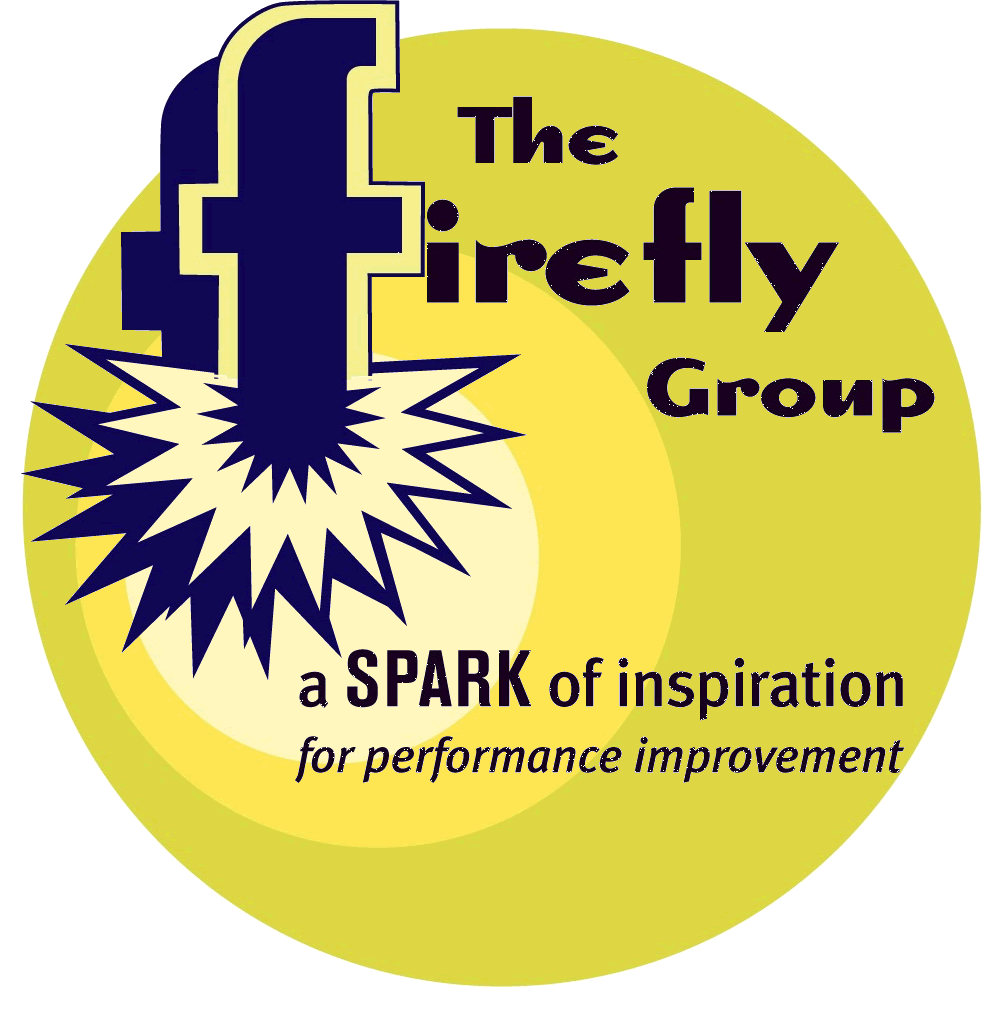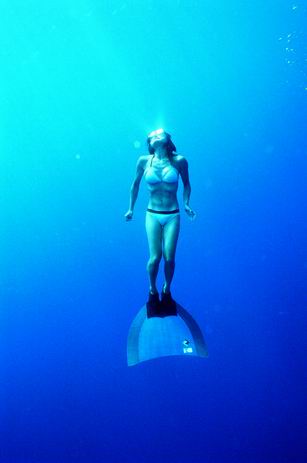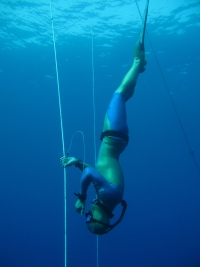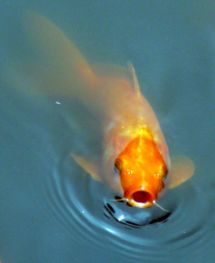


November 2009
In this Issue: BONUS: Reader's response to our Discovery of Make Belief Comix - Click Here!
|
Say
It Quick |
Discoveries bits of serendipity to inspire and motivate |
Ideas fuel for your own continuous learning |
Activities tips and tricks you can try today |
| Changing Tides | Freediving | Just Breathe | Don't Hold Your Breath |
Perspective, conditioning, and maintaining a natural flow all combine this month to provide insight about adjusting to change – beginning with this 99-Word story by Kate Koski, Principle of CultureWorks Consulting and also a member of the Firefly Group.
Changing Tides
They took the lane markers out of my swimming pool for repair. Suddenly no
ropes! Swimming was incredibly difficult with all of the turbulence of the
water. Totally annoyed, I found myself being distracted by my negative and
complaining thoughts.
Then I realized that if I kept my thoughts positive toward the exercise, it would be easier to float through the disturbance and still have a great swim.
I thought it was similar to the way life throws turmoil at us, but if we keep our minds steady and on our goals, we can ride it out.
 Freediving
Freediving
No pressure suit. No oxygen tank. Swimming straight down 120 meters – and
back! How do they do it?
Diving for pearls, abalone, or coppers, they've been doing it for hundreds of years. Today it has evolved into an extreme sport with nearly a dozen categories of competition. But how can anyone possibly hold their breath at such incredible depths for nearly four minutes?
Freediving is only possible because of the mammalian diving reflex, an instinctive response that shuts down nearly all bodily functions except the heart and brain. The reflex is a type of apnea that enables porpoises, whales, otters, and humans to stay submerged for long periods of time without being overcome by the urgent need to breathe.
The mammalian diving reflex is triggered by cold water contacting the face. Water that is warmer than 21 °C (70 °F) does not cause the reflex, and neither does submersion of body parts other than the face. Specifically, the reflex enables the human body to make several adaptations under extreme diving conditions including:
But freediving is more than a competitive sport. It is also espoused as a relaxing, liberating way to commune with nature. The experience of freedom in an underwater environment makes freediving a personal and spiritual journey for many.
Click the following link to see several videos showing both competitive and noncompetitive examples of freediving. https://sites.google.com/site/nzfreedive/
Just Breathe
“Just Breathe.” Type it into Google and you'll get over 9 million hits including
massage centers, yoga practitioners, book titles, and song recordings with
lyrics. The consistent theme of these search results? Relaxation, focus, release
of stress.
 Interesting
that a function as natural and necessary as breathing gets so much attention.
Though we cannot help doing it, apparently we have trouble doing it well.
And when "done well” we immediately feel less anxious and better able
to attend to the needs of the moment.
Interesting
that a function as natural and necessary as breathing gets so much attention.
Though we cannot help doing it, apparently we have trouble doing it well.
And when "done well” we immediately feel less anxious and better able
to attend to the needs of the moment.
If you constrict your breathing, inducing apnea, your body quickly revolts forcing you to breathe. (Unless your mammalian diving reflex kicks in!) At the other extreme, hyperventilate, and you'll pass out from an overdose of carbon dioxide. But in our every day parlance, breathing has many meanings.
Something good that comes unexpectedly is a breath of kindness. Something anticipated for a long time comes as a breath of fresh air.
You can breathe the breath of life, take your last breath, be breathless with anticipation, and have your breath taken away by fear, surprise, or beauty.
You can catch your breath, hold your breath, wait with bated breath, be out of breath, and have bad breath!
No matter what you do with it, your breathing not only fuels your body and steadies your mind, it also acts as a metaphorical measure of your current state. Sometimes you may need to slow things down, withdraw, set up your defenses. Other times it may be appropriate to pump things up and breathe new life into a project, people, or a system.
How are you breathing now? Does your breathing direct the way you live or does the world around you drive the way you breathe? And, most importantly, which do you prefer?
If you have ideas about that, please ! In the meantime, you may be intrigued by these related quotes:
Always first draw fresh breath after outbursts of vanity and complacency. -Franz Kafka
Space is the breath of art. -Frank Lloyd Wright
All good writing is swimming under water and holding your breath. -F. Scott Fitzgerald
You're never promised your next breath.- Lenny Kravitz
Fear is excitement without breath. -Robert Heller
A human being is only breath and shadow. -Sophocles
After all, computers crash, people die, relationships fall apart. The best we can do is breath and reboot. -Sarah Jessica Parker
Don't Hold
Your Breath
How long can you hold your breath? You probably don't worry about it that
much. Breath holding competitions were an activity of our youth, a way to
entertain ourselves in the back seat of the car on long trips. But here's
a way you can use bated breath to help people think about change and the the
degree of resistance they may have to it. Use this activity to demonstrate
that change is as natural as breathing. It only becomes a problem when we
resist.
 Ask
members of your group to count their rate of breathing while sitting comfortably
relaxed. (Tick off fifteen seconds for them) Ask them to record the number
of breaths they took in the time period and keep their number to themselves.
Now tell them that, on your signal, you’d like them to take a deep breath
and hold it for as long as they can. Emphasize that this is not a contest.
You don’t care how long anyone holds their breath. Rather, you’d like them
to notice what they are sensing and feeling while holding their breath. Encourage
them to keep from breathing as long as they can, until it feels as if their
eyes are ready to pop out and their skin is turning blue. Give the signal
and wait.
Ask
members of your group to count their rate of breathing while sitting comfortably
relaxed. (Tick off fifteen seconds for them) Ask them to record the number
of breaths they took in the time period and keep their number to themselves.
Now tell them that, on your signal, you’d like them to take a deep breath
and hold it for as long as they can. Emphasize that this is not a contest.
You don’t care how long anyone holds their breath. Rather, you’d like them
to notice what they are sensing and feeling while holding their breath. Encourage
them to keep from breathing as long as they can, until it feels as if their
eyes are ready to pop out and their skin is turning blue. Give the signal
and wait.
When the room is breathing again, ask this question: “Stop and think for a moment. I asked you to hold your breath. Your lungs began to ache and your head began to spin. You couldn’t wait any longer. At what point did you first begin to feel relief?” Most people will report that they felt better as soon as they began to exhale. A few may say they felt better once they took a breath but upon reflection, they will agree that the first sign of relief comes as air leaves the lungs. In fact, it doesn’t matter if you have a big gulp of air in your lungs. It’s only when that air is in motion that your lungs can extract the oxygen that you need!
So here’s the first learning point: Many people approach change as if they were holding their breath. They try to freeze the present, keep things static, and resist change in an attempt to control the world around them. But our organizations, our teams, our families, and our communities are alive. They live, breathe, and change every day. They need movement. The purpose of work for each of us is to create movement, to produce some sort of change for the organization; for our lives. Without movement toward its goals, the organization will suffocate.
Next, tell people you’d like them to hold their breath again for as long as they can. As before, the duration is not important. This time, however, ask them to silently count how many breaths they take in the first fifteen seconds after they exhale. Have them record the number of their breaths next to their previous breathing rate. Give the start signal. Ask people to compare their two different breathing rates. Most will report that their second rate is higher. After holding your breath, your body needs to breathe faster and more often to reach a state of equilibrium. Even though relief comes when you exhale, every one of us is thinking about that next breath – and the ones that follow! We need that regular rhythm.
The second learning point, then, is this: Successful adjustment to change is not just movement, it’s movement with predictability. We know what will happen when we exhale. We will take a breath, and then another, and another. There is a predictable rhythm that we know will sustain us, give us something solid to rely upon, and help us reorient ourselves after the initial shock of change. It’s much harder to adjust to change if there’s nothing familiar in sight at the other end. Challenge your group to think about how they can use the rhythm of their own life activities to make their adjustment to change smoother.
Whether you try this activity on your own or with a group, don't leave us holding our breath! what happened!
In our October issue, we featured Make Belief Comix and gave several suggestions of activities you might try. Here's a response by Jan Sage whom I met at this year's conference of the North American Simulation and Gaming Association. Her comic shows not only her enthusiasm about the conference but also her sense of humor!
.png)
Read previous
issues. Click Archives!
To add or delete your name to our mailing list, email
with a short note in the subject line.
We want this newsletter to be practical, succinct, and thoughtful. If you have suggestions about how we can meet these criteria, please let us know! Send us an with your thoughts and ideas.
Home
| Services
| Products
| Mission
| Ideas |
The Group
| The Buzz
(c)
2005 The Firefly Group